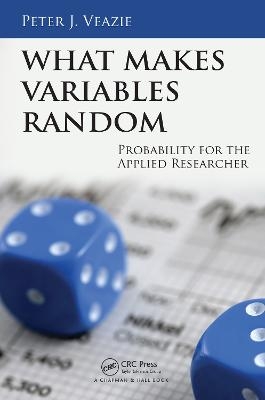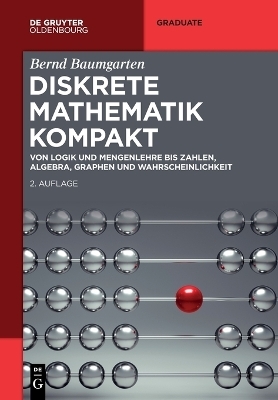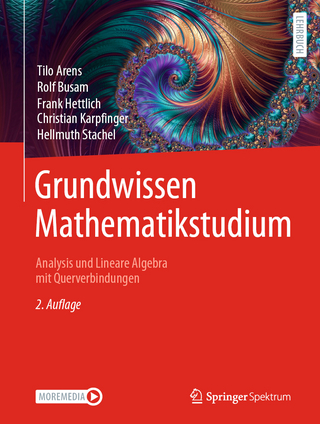
What Makes Variables Random
Probability for the Applied Researcher
Seiten
2017
Chapman & Hall/CRC (Verlag)
978-1-4987-8108-4 (ISBN)
Chapman & Hall/CRC (Verlag)
978-1-4987-8108-4 (ISBN)
- Titel z.Zt. nicht lieferbar
- Versandkostenfrei innerhalb Deutschlands
- Auch auf Rechnung
- Verfügbarkeit in der Filiale vor Ort prüfen
- Artikel merken
What Makes Variables Random: Probability for the Applied Researcher provides an introduction to the foundations of probability that underlie the statistical analyses used in applied research. By explaining probability in terms of measure theory, it gives the applied researchers a conceptual framework to guide statistical modeling and analysis.
What Makes Variables Random: Probability for the Applied Researcher provides an introduction to the foundations of probability that underlie the statistical analyses used in applied research. By explaining probability in terms of measure theory, it gives the applied researchers a conceptual framework to guide statistical modeling and analysis, and to better understand and interpret results.
The book provides a conceptual understanding of probability and its structure. It is intended to augment existing calculus-based textbooks on probability and statistics and is specifically targeted to researchers and advanced undergraduate and graduate students in the applied research fields of the social sciences, psychology, and health and healthcare sciences.
Materials are presented in three sections. The first section provides an overall introduction and presents some mathematical concepts used throughout the rest of the text. The second section presents the basic structure of measure theory and its special case of probability theory. The third section provides the connection between a conceptual understanding of measure-theoretic probability and applied research. This section starts with a chapter on its use in understanding basic models and finishes with a chapter that focuses on more complicated problems, particularly those related to various types and definitions of analyses related to hierarchical modeling.
What Makes Variables Random: Probability for the Applied Researcher provides an introduction to the foundations of probability that underlie the statistical analyses used in applied research. By explaining probability in terms of measure theory, it gives the applied researchers a conceptual framework to guide statistical modeling and analysis, and to better understand and interpret results.
The book provides a conceptual understanding of probability and its structure. It is intended to augment existing calculus-based textbooks on probability and statistics and is specifically targeted to researchers and advanced undergraduate and graduate students in the applied research fields of the social sciences, psychology, and health and healthcare sciences.
Materials are presented in three sections. The first section provides an overall introduction and presents some mathematical concepts used throughout the rest of the text. The second section presents the basic structure of measure theory and its special case of probability theory. The third section provides the connection between a conceptual understanding of measure-theoretic probability and applied research. This section starts with a chapter on its use in understanding basic models and finishes with a chapter that focuses on more complicated problems, particularly those related to various types and definitions of analyses related to hierarchical modeling.
Peter Veazie, PhD, is an associate professor in health services research and policy at the University of Rochester. He is the Chief of the division of Health Policy and Outcomes Research and the Director of the Health Services Research and Policy graduate programs. Dr. Veazie’s research interests include the psychology of health care decision making, health outcomes, and statistical research methods.
Preface
Section I Preliminaries
1. Introduction
2. Mathematical Preliminaries
Section II Measure and Probability
3. Measure Theory
4. Probability
Section III Applications
5. Basic Models
6. Common Problems
Bibliography
Index
| Erscheinungsdatum | 12.07.2017 |
|---|---|
| Zusatzinfo | 35 Illustrations, black and white |
| Sprache | englisch |
| Maße | 156 x 234 mm |
| Gewicht | 340 g |
| Themenwelt | Mathematik / Informatik ► Mathematik |
| ISBN-10 | 1-4987-8108-X / 149878108X |
| ISBN-13 | 978-1-4987-8108-4 / 9781498781084 |
| Zustand | Neuware |
| Haben Sie eine Frage zum Produkt? |
Mehr entdecken
aus dem Bereich
aus dem Bereich
Von Logik und Mengenlehre bis Zahlen, Algebra, Graphen und …
Buch | Softcover (2024)
De Gruyter Oldenbourg (Verlag)
74,95 €
Analysis und Lineare Algebra mit Querverbindungen
Buch | Hardcover (2022)
Springer Spektrum (Verlag)
64,99 €
Versteckte Beiträge, die die Welt verändert haben
Buch | Hardcover (2023)
Springer (Verlag)
29,99 €


